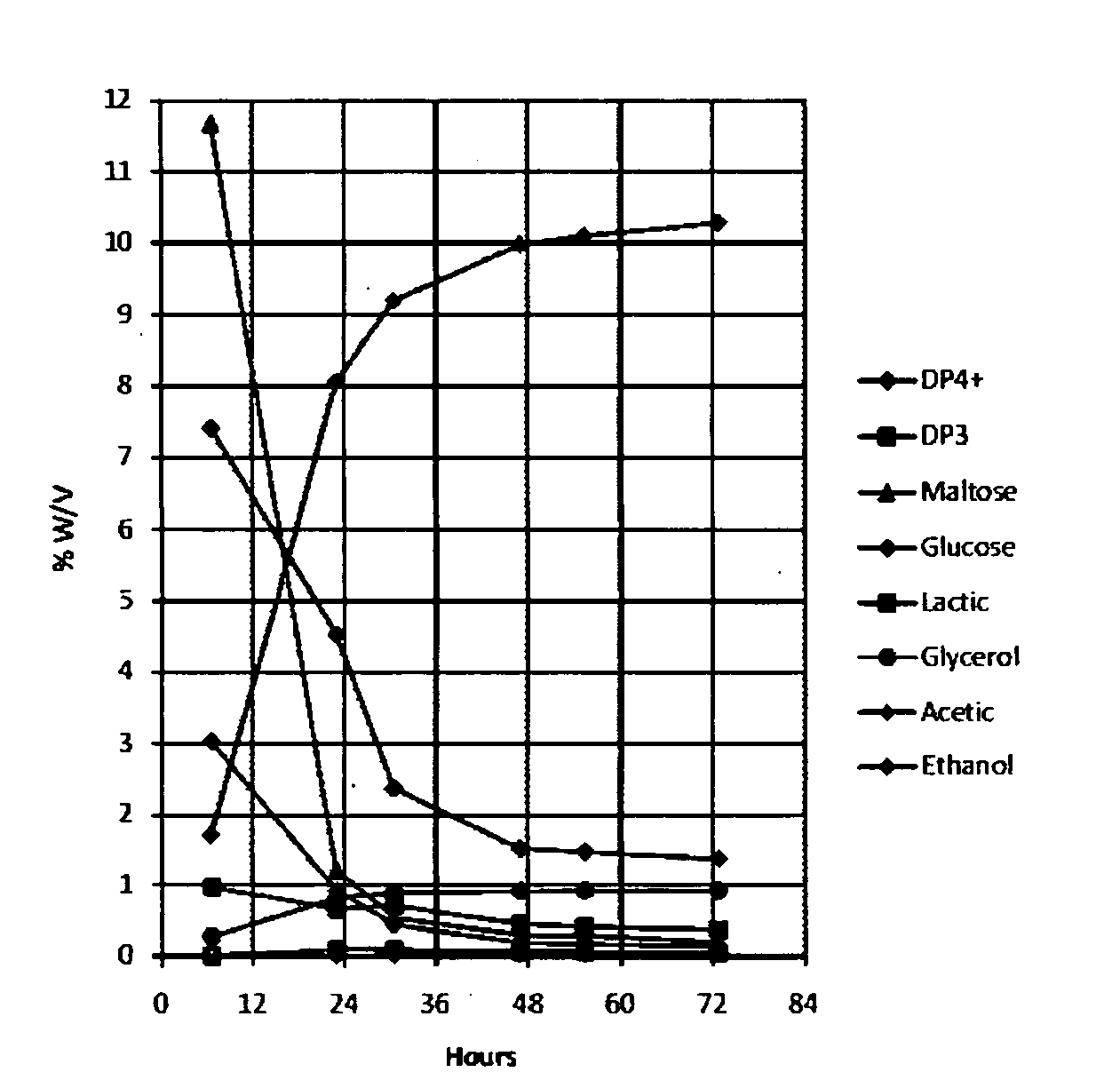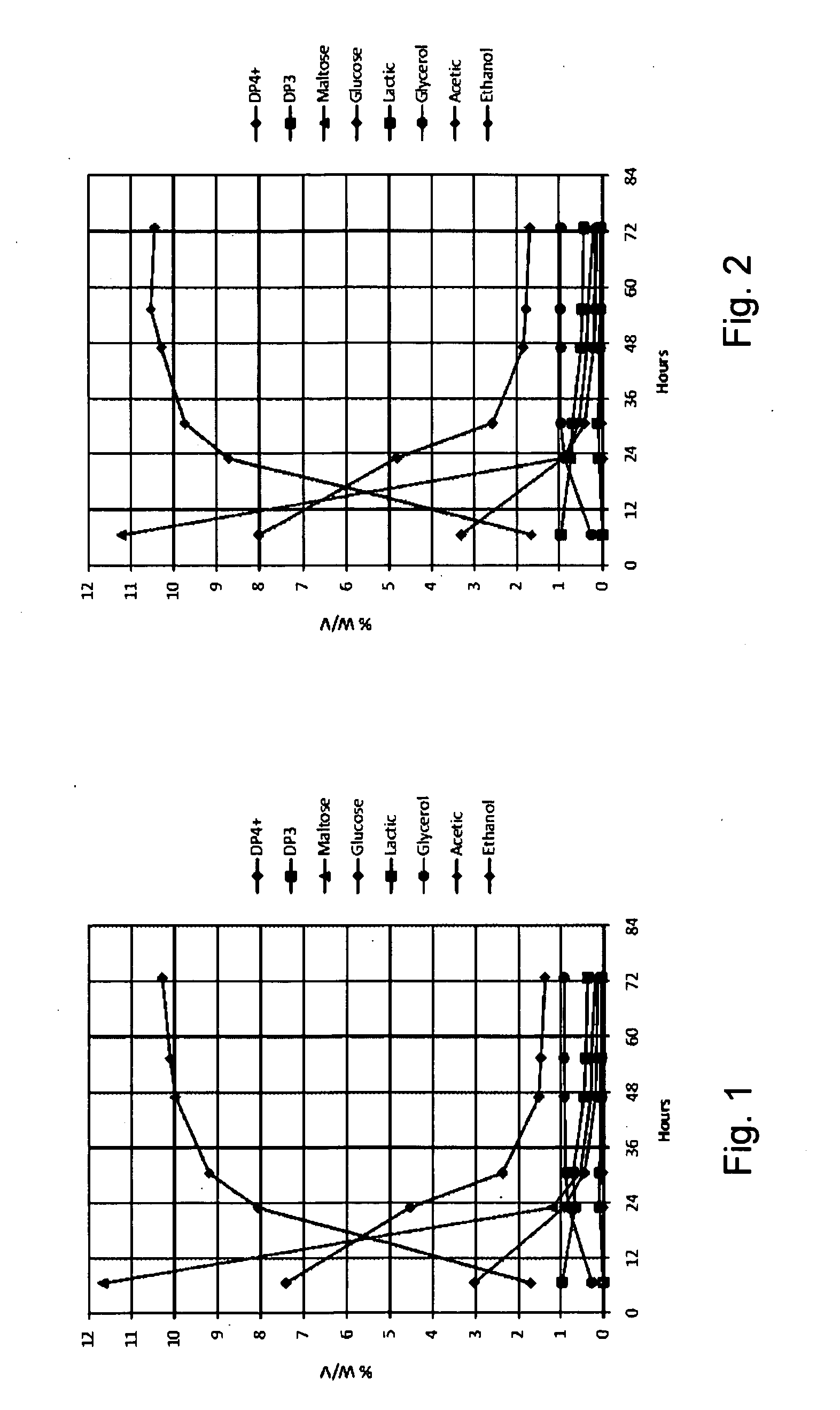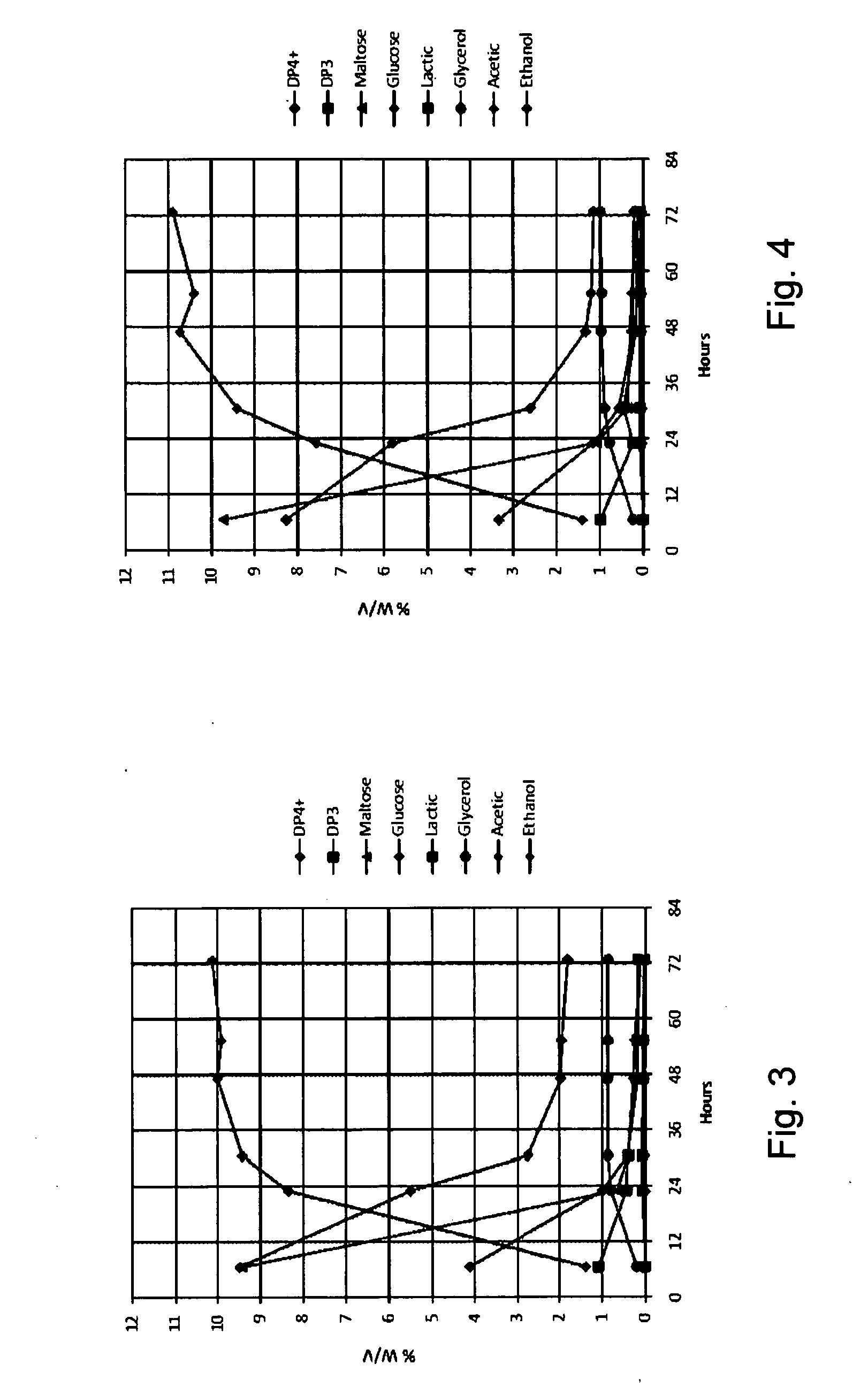Pretreatment of grain slurry with alpha-amylase and a hemicellulase blend prior to liquefaction
a technology of hemicellulase and grain slurry, which is applied in the field of processing grains, can solve the problems of limited the ability to use wheat in the production of ethanol, and high viscosity of slurry
- Summary
- Abstract
- Description
- Claims
- Application Information
AI Technical Summary
Benefits of technology
Problems solved by technology
Method used
Image
Examples
example 1
[0032]As a preliminary step, Vista white wheat flour was ground through a #8 screen using a hammer mill. A slurry was prepared by mixing together approximately 640 grams of the Vista white wheat flour with about 1,360 grams of water, alpha-amylase at a concentration of about 0.2 kg / MT of flour, and hemicellulase at a concentration of about 0.2 kg / MT of flour.
[0033]A comparative slurry was prepared using the same compositions set forth above with the exception of alpha-amylase, which was omitted.
[0034]The pH of the slurry was adjusted to about 5.5 using dilute sulfuric acid. While stirring, the slurry was then heated to a temperature of about 60° C. Samples were periodically taken for HPLC analysis, refractive index measurement and viscosity measurement. The refractive index was measured using the brix scale. The viscosity was measured using a Brookfield viscometer.
[0035]Results are set forth in Table 1. The slurry processed with a viscosity breaking enzyme (NSP hydrolyzing enzyme) i...
example 2
[0042]The influence of hemicelluase in reducing the slurry viscosity was evaluated using ground whole wheat and ground wheat endosperm. As an initial step, soft white winter wheat was fractionated into 15.6 percent bran and 84.4 percent endosperm. A slurry was prepared by mixing together approximately 640 grams of the ground whole wheat or the ground wheat endosperm with about 1,360 grams of water, alpha-amylase at a concentration of about 0.2 kg / MT. The hemicellulase was added at concentrations of 0, 0.1 and 0.3 kg / MT.
[0043]The pH of the slurry was adjusted to about 5.5 using dilute sulfuric acid. While stirring, the slurry was then heated to a temperature of about 60° C. for about 30 minutes and then treated at a temperature of about 85° C. for about 90 minutes to complete liquefaction. Results are set forth in Table 2.
TABLE 2Liquefaction of whole wheat and wheat endospermPretreatLiqHPLC Carbohydrate0.5 hrHC1.5 hrProfile % w / vWheat° C.kg / MT° C.BrixVis cpDP4+DP3DP2GlucoseWhole600.0...
example 3
[0046]The performance of CPS red Canadian wheat was also evaluated. As a preliminary step, CPS red Canadian wheat was ground through a #7 screen using a Bliss hammer mill. In a fermentation vessel having a capacity of about 180 liters, approximately 91.8 liters of water was added and then heated to a temperature of about 60° C. While stirring, about 43.2 kg of ground CPS red Canadian wheat was added to the fermentation vessel.
[0047]After about 40 percent of the flour was added, hemicellulase was added at a concentration of about 0.2 kg / MT and alpha-amylase was added at a concentration of about 0.2 kg / MT. The pH of the slurry was adjusted to about 5.5 with the addition of 50% (v / v) sulfuric acid. The slurry was maintained at a temperature of about 60° C. and then heated to a temperature of about 85° C. to complete the liquefaction step.
[0048]After the one hour pretreatment, a viscosity of the slurry was measured. The brix of the supernatant was also measured. The supernatant was also...
PUM
 Login to View More
Login to View More Abstract
Description
Claims
Application Information
 Login to View More
Login to View More - R&D
- Intellectual Property
- Life Sciences
- Materials
- Tech Scout
- Unparalleled Data Quality
- Higher Quality Content
- 60% Fewer Hallucinations
Browse by: Latest US Patents, China's latest patents, Technical Efficacy Thesaurus, Application Domain, Technology Topic, Popular Technical Reports.
© 2025 PatSnap. All rights reserved.Legal|Privacy policy|Modern Slavery Act Transparency Statement|Sitemap|About US| Contact US: help@patsnap.com



